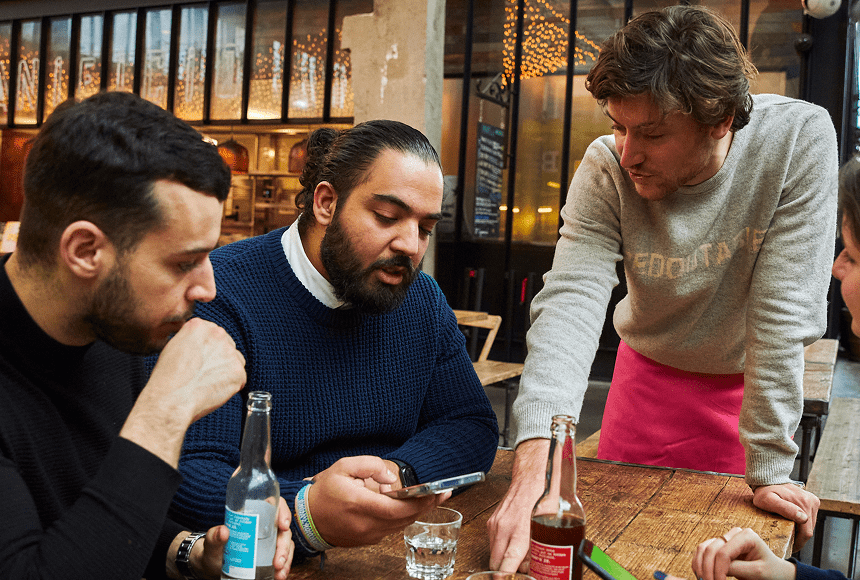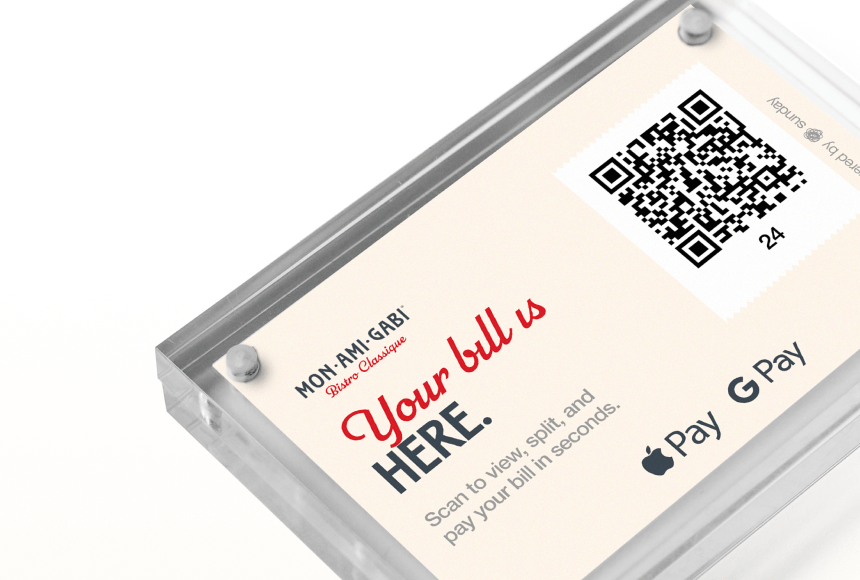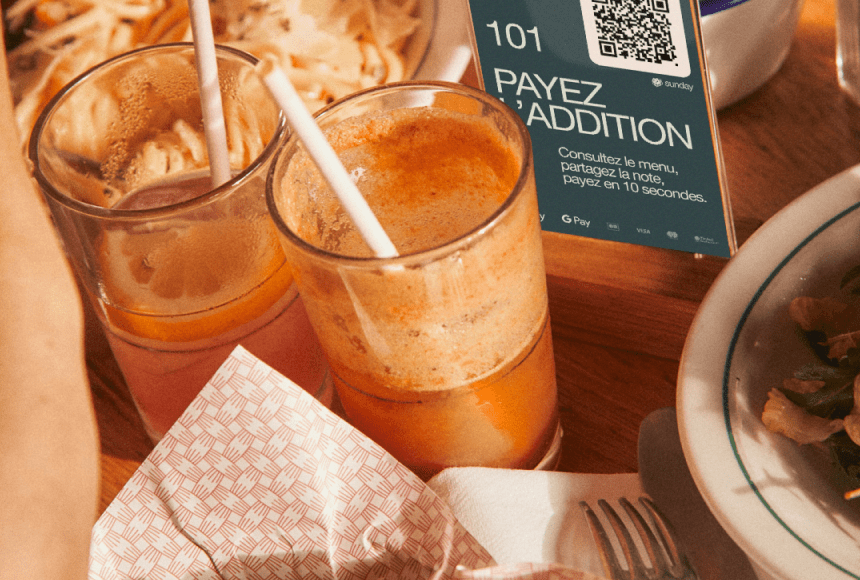Transform Occasional Diners into Dedicated Regulars with the Power of Payment Data
The Payment Data Advantage
Imagine greeting your customers like old friends every time they step into your restaurant. You know them, they know you; it’s a warm, trusting relationship that keeps them coming back for more. Achieving this sense of connection doesn’t happen overnight, yet there’s a powerful tool that can help you establish meaningful relationships faster: payment data.
By collecting and analyzing the information generated from every credit card transaction, restaurant owners gain tangible insights into purchasing habits, preferences, and overall behavior. Effective use of payment data enables you to identify your most loyal patrons and craft strategies to convert casual visitors into regulars. In other words, data is more than just numbers on a spreadsheet—used wisely, it provides a golden opportunity to strengthen your business in ways you might never have imagined.
For instance, a quick look at your payment records might reveal certain menu items are more popular on specific days, or that your average transaction size spikes during lunch on weekdays. When you delve deeper, you uncover patterns that go well beyond the day-to-day hustle. You start to see paths to improving your menu, refining your service, and creating personalized experiences that keep your guests delighted at every turn.
This article will guide you through the concept of leveraging payment data to not only manage transactions but also build relationships. We’ll navigate how payment-related analytics can transform your occasional customers into steadfast regulars, and how aligning with modern tools—like QR code pay-at-the-table solutions—makes data collection and analysis more straightforward than ever.
Understanding the Customer Journey Through Payment Data
The old-school mentality of simply completing a transaction and handing back a receipt is long gone. Today’s customers crave more: a great experience, genuine connection, and even a sense of belonging. Payment data can be your secret ingredient to deliver all these elements. By analyzing what people order, how frequently they visit, and how much they spend, you can map out their journey from first-timer to loyal fan.
Transforming that casually dropped-in guest into a repeat visitor means first recognizing exactly who they are. Who’s stopping by once a month? Who’s visiting multiple times a week? Are there spikes in certain days or times that signal recurring patterns? Payment data allows you to identify these trends—and once recognized, you can adapt your offerings accordingly.
Another crucial element is segmentation. Payment data provides a wealth of behavioral information that helps you group your customers according to their habits and spend levels. You might notice, for example, “weekday lunch loyalists” who rarely visit on weekends. You can then tailor your lunch menus, promotions, or reward programs to entice those guests to come in more frequently. Furthermore, you may have “special occasion visitors” who tend to come in on birthdays or anniversaries. Targeted outreach, personalized greeting notes, or special celebratory desserts can transform these once-a-year visitors into more regular patrons.
This holistic view of the journey sets the stage for powerful interventions. It’s not about mere guesswork or copy-pasted marketing ideas. It’s about using real data from real transactions—and transforming it into data-driven strategies that resonate with every segment of your audience.
Turning Transactions into Personalized Experiences
Restaurants that treat every table the same miss out on opportunities to stand out in a competitive market. Instead, think of each guest’s payment data as an open invitation to personalize their next experience. Picture it: The moment a repeat customer arrives, your staff knows their favorite dish, or perhaps recommends a new meal based on their past orders. This level of individualized service can set your restaurant apart in a cluttered industry.
How does payment data make personalization easier? Let’s say a group of frequent diners consistently orders items containing specific ingredients—like avocados or fresh seafood. Next time they visit, your server can strategically mention a new menu addition that includes their favorite ingredient. Small gestures like these go a long way toward making someone feel valued and understood.
Your existing data can also fuel loyalty programs within your restaurant. For instance, if you notice a specific customer frequently indulges in your signature dessert, a personalized discount or complimentary treat might entice them to come in more often. Even a simple “We missed you!” note with an exclusive offer for lapsed customers can rekindle the relationship. By tapping into your transaction database, you gather enough context to tailor your outreach, so it feels authentic rather than overly promotional.
Effective personalization doesn’t require a massive budget or plush marketing campaigns. It requires focus, imagination, and a willingness to examine the story each transaction tells. When a customer sees thoughtful gestures—not just generic deals—they’re far more likely to return and spread the word.
Building Loyalty with Data-Driven Insights
Driving loyalty is a frequently discussed goal among restaurant owners, but only a small percentage systematically uses payment data to achieve it. A study by the QSR Magazine found that data-driven loyalty programs have seen impressive success rates, as customers respond more enthusiastically to offers that match their personal tastes.
One of the most effective ways to nurture loyalty is to turn raw data into practical actions. Statistics might indicate a certain time slot (late afternoon, for instance) is slower, but a segment of your guests still shows up for an early dinner. Providing them with a time-specific deal—a discounted appetizer or a happy-hour beverage—can reward those who dine off-peak and encourage more frequent visits.
Combining payment data with a loyalty platform can multiply these effects. If you notice a subset of your customers visits twice a month, offering a “third meal on the house” after two visits can be the nudge they need to come in even more often. It’s about reinforcing behaviors you want to see more of. Rewarding your best customers not only secures their return but also turns them into brand advocates who recommend your place to friends, family, and social networks.
On another note, make sure to keep the experience easy and seamless. If redeeming an offer feels cumbersome or if guests have to jump through hoops, they’ll lose interest. Embrace modern payment solutions that automatically apply discounts or track loyalty progress—making the process effortless not just for the guest but also for your staff. This frictionless dynamic leaves a lasting positive impression.
Enhancing the Dining Experience with Google Reviews
Your online reputation matters as much as what happens within your brick-and-mortar walls. Prospective diners often rely on Google reviews to decide where to eat next. Payment data helps you pinpoint when guests are most satisfied—perhaps after they’ve ordered one of your top-rated dishes or received outstanding service—and prompt them to post a public recommendation right away.
Imagine a restaurant that integrates its point-of-sale data with a system that automatically sends a quick follow-up or a request for a Google review once the customer has finished paying. Guests who’ve enjoyed a great experience are more likely to respond immediately, while that satisfying meal is still fresh in their minds. The result? More positive ratings, more digital credibility, and a fortified online presence.
Encouraging reviews can also generate a feedback loop, so you know exactly where you shine and where you might need to improve. For example, you might spot recurring complaints about wait times when your dining room is near capacity. That information, coupled with payment data, can show you the most common time blocks for these longer waits. Armed with that knowledge, you can adjust staffing or streamline kitchen operations. You preserve the quality of your service and minimize negative feedback.
Remember: Reviews aren’t just about star counts; they’re also a window into your guests’ minds. Leveraging data to pair positive experiences with gentle review prompts helps build your online reputation while simultaneously strengthening your in-house culture of service excellence.
Data Privacy and Ethical Considerations
As convenient as it is to gather and analyze payment data, you also have a responsibility to protect your customers’ privacy and comply with relevant laws. This includes upholding regulations such as the Payment Card Industry Data Security Standard (PCI DSS), which helps ensure that cardholder data is secured during and after each transaction.
Beyond PCI compliance, restaurants must be transparent about how they plan to use payment information. For example, if you launch a loyalty program that collects personal details, let people know exactly what data is being kept and how it will be protected. Fairness and honesty are crucial in winning and keeping guest trust.
There’s a delicate balance between using data to personalize and coming across as intrusive. A restaurant that references a past order too specifically can risk making guests uncomfortable. It’s wise to keep the tone of your interactions congenial, focusing on enhanced service and added value. The objective is to make customers feel recognized in a positive way—never spied on.
Executing proper data handling not only avoids legal pitfalls but also cultivates a climate of trust that can become one of your competitive advantages. Compliance and transparency are powerful allies for any restaurant that strives for lasting relationships.
A Real-Life Data-Driven Success Story
Picture a mid-sized bistro, “Coastal Cravings,” located in a bustling coastal town with heavy tourist traffic each summer. The owner, Sarah, noticed that while tourism fueled weekend revenue, weekday sales were flatter, specifically during dinner hours. She decided to analyze her monthly payment records to find clues about her clientele’s behavior.
From transaction data, Sarah discovered a pattern: a small but consistent crowd of locals visited every Tuesday for her “Homey Comfort” special. Between 5 PM and 7 PM, they spent an average of 18% more than weekend walk-ins. This suggested that with the right marketing push, even more local residents could follow suit. Sarah created a new loyalty perk: a weekly rotating special on Tuesday nights that included a discounted entrée and a free appetizer for returning guests who had visited in the last 30 days. She made sure her servers encouraged feedback and asked satisfied customers if they could share a quick Google review.
The results? Over two months, midweek dinner traffic grew by 25%, average check size soared by 15%, and locals turned into brand ambassadors, often posting photos of their meals on social media. What began as a simple pattern spotted in payment data evolved into a winning strategy. And by integrating local favorites, consistent follow-ups, and top-notch service, Sarah built lasting connections with her once-occasional visitors.
This example can illuminate the possibilities for your own establishment, regardless of whether it’s a small eatery, a sprawling venue, or a fine-dining spot. Data, combined with a warm, personal approach, can transform any ordinary transaction into a springboard for loyalty.
Simple Steps to Capture and Leverage Payment Data
If the concept of tracking and using transaction data sounds intimidating, fear not. You don’t need an advanced degree in analytics to benefit from this approach. Here are easy steps any restaurant owner can follow to get started:
- Adopt the Right POS System: Choose a modern payment terminal or point-of-sale that automatically logs detailed transaction information. This technology can integrate with software that categorizes and compiles sales data into easy-to-understand reports.
- Train Your Staff: Even the best tools won’t matter if your team doesn’t use them properly. Make sure servers and managers know how to capture guest information (when appropriate) and input orders into the system accurately.
- Define Key Metrics: Not all metrics are created equal. Focus on ones that align with your goals, such as average order size, frequency of visits, or redemption rates for specific promotions.
- Analyze Regularly: Set aside time—every week or month—to review your data and spot patterns. Don’t wait until the end of the quarter when minor issues could have ballooned into bigger problems.
- Implement Your Findings: Use insights to adjust menu options, plan promotions, or fine-tune staff scheduling. Make sure changes are trackable so you can measure the impact.
- Communicate with Guests: Prompt feedback at the right time. If someone consistently orders a certain dish, consider adding a personal note when you introduce similar menu options.
By following these steps, you’ll not only gather valuable data; you’ll also create a dynamic environment where insights are swiftly turned into action. It’s a process that grows more powerful with every new transaction.
Harnessing QR Code Payment Solutions
The humble paper bill holder is slowly being replaced by the ease and immediacy of QR code payment systems. Once the domain of high-tech or fast-casual concepts, QR code payments have quickly become common across different types of establishments. The reason is simple: scanning a code so guests can pay via smartphone is convenient, secure, and quick.
But the advantages of QR codes don’t end with convenience. Providers like sunday have combined QR-based payment with features that allow customers to leave a tip, share feedback, and even post a review on Google directly after paying. This environment is a treasure trove of data for restaurant operators. Not only can you capture transaction details seamlessly, but you also gain quicker access to real-time feedback that can be integrated into your broader analytics toolbox.
Plus, when guests pay through a mobile interface, they often opt to share their email addresses or phone numbers—transforming a simple transaction into a deeper connection. This permission-based data becomes a gateway to targeted marketing. For instance, if a diner uses the same phone number each time they visit, you can then create personalized offers or reward programs that greet them with a familiar “Hello!” the moment they scan the code again.
QR code payment systems smooth out friction points during the dining experience, enabling staff to focus on personal interactions rather than running credit cards back and forth. When your teams have more time to engage, they’re more likely to create memorable moments that foster loyalty. Couple that with robust analytics, and you have a recipe for consistent customer satisfaction and repeat business.
Beyond Payment: The Future of Data-Driven Hospitality
The cutting edge of restaurant data collection is already extending beyond conventional payment analytics. Technologies involving mobile loyalty apps, online reservations, and even AI-driven chatbots are forming a connected ecosystem. In many ways, payment data is simply the foundation of a rapidly evolving, data-driven environment.
Picture a system that integrates point-of-sale information with online order history, social media mentions, and real-time inventory management. Each time a customer completes a transaction, you don’t just record their bill; you also track their table preferences (thanks to reservations data), check if they posted an Instagram photo of your famous dessert, and update your stock levels to ensure you never run out of popular items without noticing. All these discrete elements unify for a well-rounded understanding of your guests, your menu, and your operations.
Restaurants that harness this ecosystem can respond to market trends with lightning speed. Did a sudden spike in demand for a particular dish catch you off guard? The integration of sales data tells you quickly, so you can stock up and avoid disappointments. Are you seeing interest from a new demographic segment, perhaps from a younger crowd drawn to a trending dish on social media? Payment details and demographic data in a single dashboard reveal these emerging patterns, prompting you to ramp up relevant promotions.
It’s not a matter of if the industry will move toward deeper data integration, but how quickly. For restaurant owners who resist change, the risk is losing loyal customers to competitors who offer a more tailored, fluid experience. Those who embrace technology and data-driven solutions, conversely, often find new avenues to thrive in an ever-shifting market.
Frequently Asked Questions (FAQ)
How can I collect payment data without making guests uncomfortable?
It’s all about transparency and a user-friendly process. Explain when and why you store specific information, and ensure you use secure systems that keep data private. If you’re capturing emails or phone numbers, make sure guests opt in. Let them know how sharing their data can enhance their dining experience, such as through personalized offers.
Is using a payment terminal enough, or should I invest in a complete POS system?
Modern point-of-sale (POS) systems are typically more robust than a standalone payment terminal because they integrate sales reporting, menu management, and customer insights in one place. If you only use a basic terminal, you may miss out on detailed analytics. A comprehensive POS solution lets you track sales, identify patterns, and automate loyalty efforts more effectively.
What types of loyalty incentives work best?
Customers enjoy rewards that are immediate, straightforward, and relevant. Think instant discounts, free appetizers, or a free dessert after a certain number of visits. Complex point systems can be off-putting unless they’re easy to understand and redeem. Start small, track the results, and adjust your rewards based on real-world guest feedback.
How do I handle negative reviews prompted by automated follow-ups?
Negative reviews can provide crucial insights. Address them professionally and attentively. Respond swiftly with an apology, clarify any misunderstandings, and offer a resolution. Publicly acknowledging a problem and showing you care about fixing it can actually strengthen your reputation overall. It demonstrates you’re serious about guest satisfaction and continuous improvement.
Are QR code payment solutions complicated to set up?
Not at all. Reputable providers like sunday can guide you through quick and easy implementation. You’ll usually receive printed QR codes to place on tables or receipts. Once scanned, customers see a secure payment portal on their phones. Integration with your POS system is typically seamless, and staff training is minimal.
Find out more today
Drop us your details below and we’ll reach out within the next 24h
Take your program to the next level.
See 62% of your customers join your loyalty program by integrating sunday.




